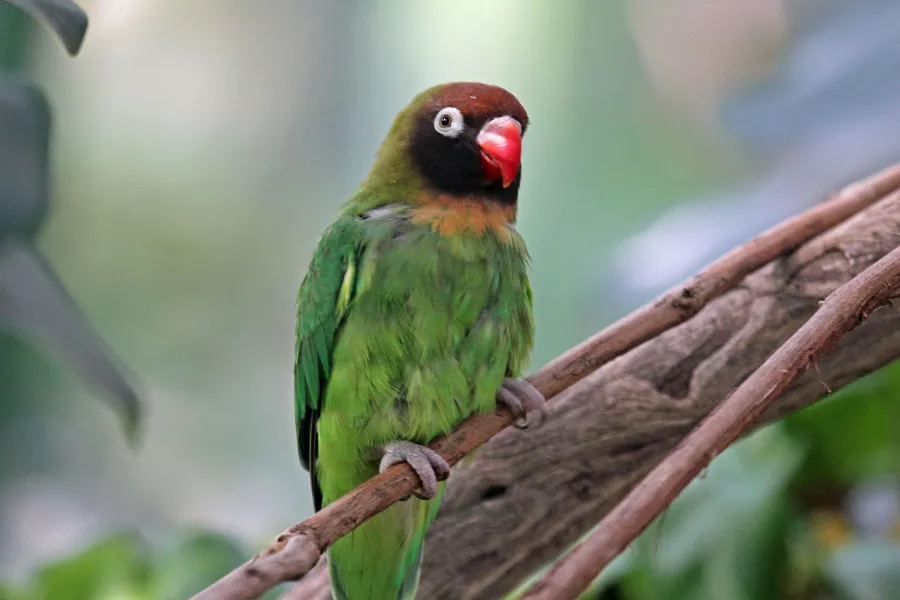What is black capped lory?
The black-capped lorikeet (scientific name: Lorius lory) has bright plumage, a black cap on the top, a red head and body, and green wings. It mainly feeds on pollen, nectar and fruit. The beak is longer than that of ordinary parrots, and more particularly, the slender tongue has brush-like hairs, called brush-like tongue, which facilitates the parrot to go deep into the flowers to obtain food. The internal structure of the body is also very special. They have a special digestive enzyme in their body to break down food. However, because the lorikeets do not have the need to digest grain feeds, their sandbags are much weaker than other parrots in handling hard food. Prefers to inhabit forests and their fringes, swampy woodlands, open woodlands and low hilly areas. Found in Indonesia and Papua New Guinea.
What does black capped lory look like?
There are seven subspecies of black-capped lorikeets, depending on the subspecies, the body length is about 30-33 cm and the weight is 200-260 grams. Black cap on top, red head and body, green wings, yellow underwing coverts, blue legs, broad stripes on the scorpion and abdomen, subspecies colors vary widely, but all have red head and body and green wings. The beak is pink and the iris is black.
black capped lory living habits
Usually paired or gathered in small groups of about 10, all lorikeets also have a brush-like tongue, which is convenient for them to suck pollen. In the case of cages, bird food specially designed for lorikeets can be purchased from bird stores. Most of these bird foods are sold in powder form, and some need to be mixed with water. Fruits and vegetables are also required.
They are not as loud as the red and rainbow lorikeets. The ability to speak is considered to be the better species in the lorikeet. When you just buy it, you need to ensure that the surrounding temperature is not lower than 25 degrees Celsius, and in winter, you need to ensure that the surrounding temperature is not lower than 15 degrees Celsius. Natural foods include nectar, pollen, fruits and insects.
black capped lory rearing
The breeding season is from May to October. Nests are built in the hollows of dead trees. When courting, the male bird leans on the female bird’s body and swings his wings up and down. The caged bird is very lively and playful, and is very curious. Can adapt to new environment and owner.
Artificial breeding birds should keep the environment quiet. It is better to use a thick solid wood board nest box with a size of 30 × 30 × 45 cm. The entrance is about 7 cm. On average, a nest lays 2 eggs. The incubation period is about 26 days, and the feathers grow after about 3 months. The young birds leave the nest after about 11 weeks; it is best to breed separately in pairs, because the aggressiveness is very strong, and due to the high water content of the feces, the padding such as wood chips or straw in the nest box needs to be replaced frequently to keep the The environment is hygienic, and it will not be too sensitive to the owner’s nest box inspection, but it is very prone to the situation that male and female birds fight incompatible during the breeding period, and more attention should be paid to avoid casualties.
Reminder: For more knowledge about angora rabbit, lemur, bearded reedling, golden hamster, red eyed tree frog, please pay attention to: mtedr.com, providing you with different types of small pets and pet care.


























